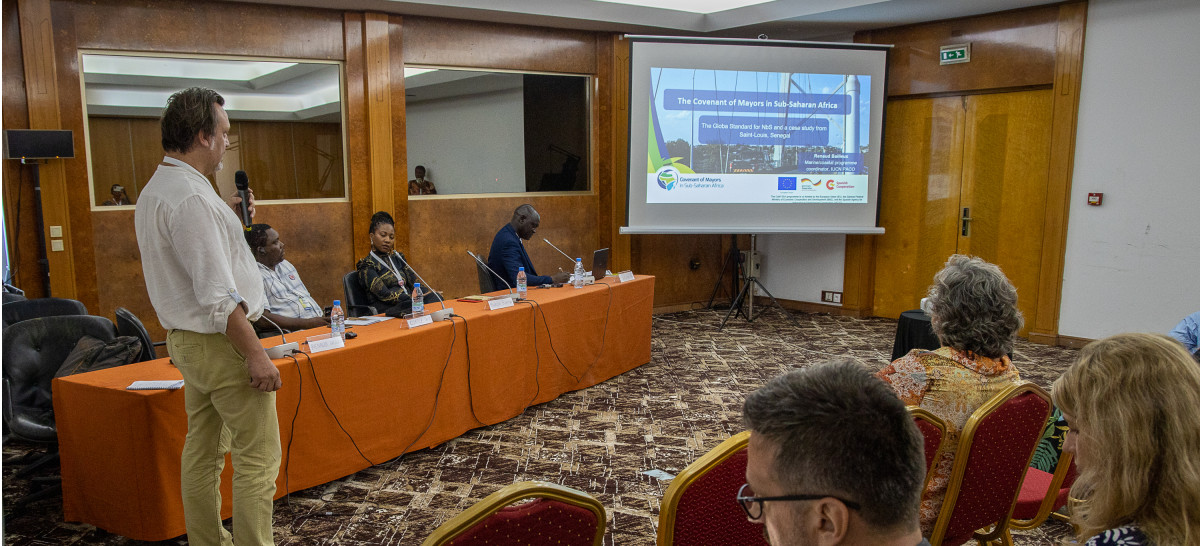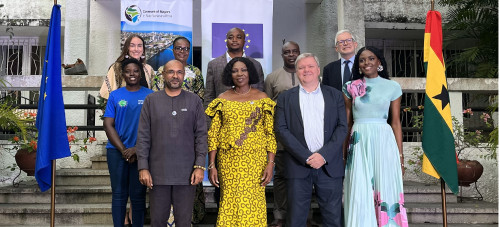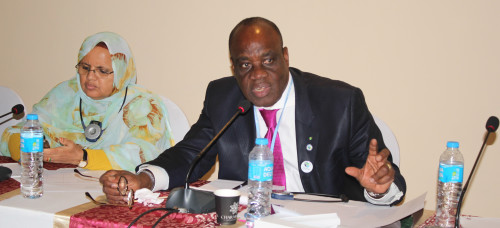During the CoM SSA Day event held in Dakar, sub-Saharan African cities advocated for investing in being better-prepared and resilient to climate change effects through innovative adaptation measures that lie in nature. While solutions can be found by working with nature, these also need to be sustainable, safeguard ecosystems, and add value to communities.
Africa’s urban population is the fastest growing globally. Millions of people in the continent are concentrated in locations that can be highly vulnerable to disaster, pollution, and the impacts of climate change. Coastal urban areas usually have higher population densities due to the economic opportunities associated with them. According to some estimations, in 15 years, half of all Africans will likely live in a town or a city. Africa’s populations in low-lying coastal zones will rise at an annual rate of 3.3 percent between 2000 and 2030, which is double the world’s average.
How will climate change affect people who live in Africa’s coastal cities?
Climate change greatly impacts people in the sub-Saharan region due to rising sea levels, coastal erosion, and saltwater intrusion in freshwater systems. These effects have a direct influence on economic activities, the habitat, and the resilience capacity of the population.
In the recent CoM SSA Day event held in Dakar, climate experts discussed adaptation through integrated coastal management and what role local governments and cities should have in the management of coastal zones.
No region of the world is unaffected by climate change exposure, and coastal erosion is a phenomenon that knows no boundaries. Although currently, the rise in water is not the main problem derived from climate change, it will be if the planet's temperature continues to rise. According to
Iñigo Aniel-Quiroga from the GOVERNADAPT project,
“combining damages of coastal inundation and erosion, the number of people affected by these phenomena will increase by 20% by 2050, by 80% by 2100, and by 170% in the worst case scenario”. He added that
“without data, cities will not be able to analyse the phenomenon optimally and provide appropriate responses. Having an accurate overview of the problem and the solutions to implement requires a combination of scientific studies and a participatory approach”. In the same line,
Sylla Aïssata B. Sall from the Centre de Suivi Ecologique (CSE) also emphasized that,
“good adaptation projects must be consistent with national and local priorities, but also with available scientific and political guidelines. Decision-makers and researchers must be involved, as they guide the choice of adapted technologies after having developed scenarios and models”.
Important role of ecosystems
Erosion and flooding are the most visible consequences of coastal zone degradation in many countries in Africa. Although coastal erosion has always been part of Earth's geologic processes, anthropogenic climate change has greatly accelerated this phenomenon.
Elhadji Ibrahima Ndiaye, CoM SSA Coordinator from the City of Dakar, mentioned in his presentation during the session on integrated coastal management that climate change particularly affects coastal areas, and it is causing profound changes that will affect 75% of the Senegalese population.
“Our ecological monitoring centre tells us that the sea level will rise by 50 cm by 2100, which could lead to the disappearance of 50 to 80 km of coastline in Senegal. This affects habitat, economic activity, and the resilience of populations, and should make us think about how to address this problem now”.
As it happens in Senegal, other countries in the region are facing the same effects. Every year, coastal degradation takes a heavy toll on human life and socio-economic prosperity. Any good adaptation project should include the needs of their communities. People are at the heart of the coastal erosion problem, not just infrastructure or the environment; coastal defences must do more than just withstand storm surges and extreme weather events.
The natural solution to coastal protection
Solutions can be found by working with nature, but also need to be sustainable, safeguard ecosystems, and add value to communities.
Climate change experts who participated at the CoM SSA Day event brought their knowledge about Nature-based Solutions (NbS) focusing on Ecosystems-based Adaptation (EbA), and how nature-based interventions could provide a wide range of benefits for other sectors, such as tourism and fisheries, as well as coastal protection. It was a consensus that NbS can help cities address urgent and fundamental environmental challenges by bringing ecosystem services back into cities and rebalancing cities’ relationships with their surrounding areas. Experts also stressed the connection between climate change, housing, physical planning, and the need for innovative finance systems to build the resilience of urban centres in Africa.
Renaud Bayeux from IUCN reflected on the NbS and the convenience of having a global standard to facilitate NbS based on the goal of
“the restoration or conservation of ecosystems or more generally of the environment with a social dimension since it is a question of obtaining benefits for the population”.
Local governments have a primary role when it comes to coastal management. They incorporate all the power and responsibilities with day-to-day decision-making related to planning, protection, regulation, revenue generation, technical assistance, etc. “
We need to integrate Ecosystem-based Adaptation (EbA) solutions outside of the environmental conservation community, in sectors — including infrastructure, water, agriculture, public works, and social development — in view to strengthen the resilience of the urban and peri-urban areas. An EbA Toolkit was developed to provide national and local Authorities with the capacities to implement and mainstream the EbA approaches into planning cycle, decision and policymaking,” said Marcia Guambe from UN-habitat.
On the other hand, local governments also face the near-impossible task of funding, as well as considerable challenges in their ability to implement coastal management due to, among other factors, limited resources, capacity, and competing demands. “
The cost of knowing the causes of coastal erosion, its parameters, and solutions focused on adaptation is high, so it is better to act together and develop regional approaches to address local issues,” said
Nicolás Desramaut from the West Africa Coastal Areas Management Program (WACA), which supports ongoing efforts led by countries and regional institutions to strengthen the resilience of communities and ecosystems. One of the options presented to the event participants was the
Adaptation Fund, managed in Senegal by the Centre de Suivi Ecologique, established under the Kyoto Protocol of the UN Framework Convention on Climate Change (UNFCCC), that finances projects and programmes that help vulnerable communities in developing countries adapt to climate change at the national and regional levels.
CoM SSA supports the knowledge exchange
Many projects were presented as lessons learnt in the CoM SSA Day event. Knowledge sharing is one of the core components of the CoM SSA programme, a European action that is currently co-financed by the European Union and the Spanish Cooperation (AECID) in several countries. The municipality of Maputo in Mozambique, one of the cities that shared lessons drawn from a project, is implementing a pilot project that supports the
reforestation and conservation of mangroves in an area prone to storms and flooding.
“The mangroves of Maputo are a source of food, energy and income for the population. They also help prevent flooding and play a key role in the absorption of CO
2, thus limiting the consequences of climate change. The government is aware of the importance of protecting and restoring mangroves and has defined a national protection strategy to promote sustainable development and contribute to the fight against climate change through actions that also favour civil society. Until now, 1 400 hectares of mangroves have been restored in the metropolitan area,” explained
Cortez Taipo, from the municipality of Maputo.
EbA for climate resilience provides a unique opportunity to address climate change and biodiversity loss in an integrated way. The CoM SSA programme will continue to support cities to act and share experiences on EbA to provide the inspiration and interest needed to increase the resilience of both people and nature in sub-Saharan Africa.
You can watch the session recording on adaptation through integrated coastal management
here.
You can watch the session recording on adaptation through cost-efficient ecosystems-based solutions
here.
--------






